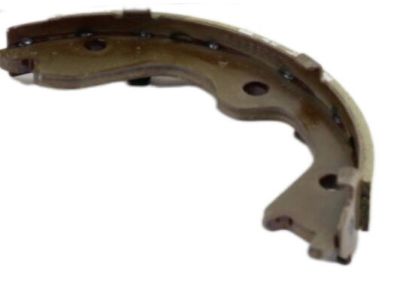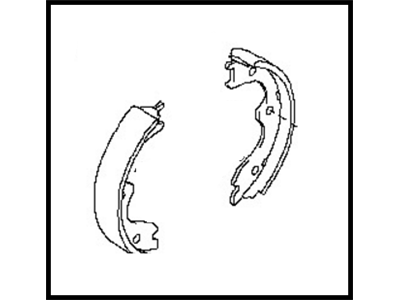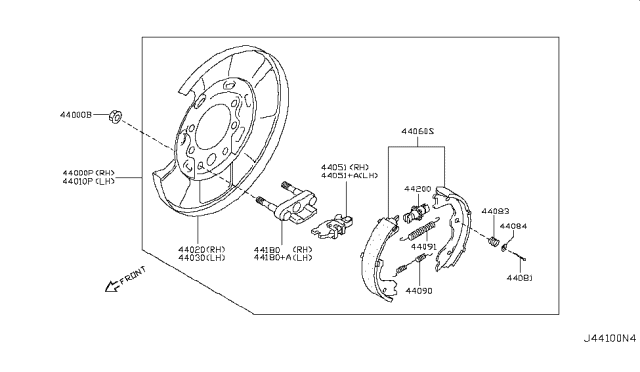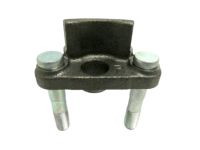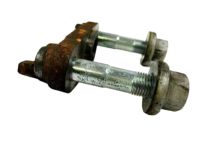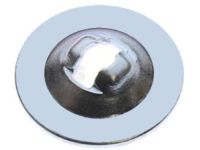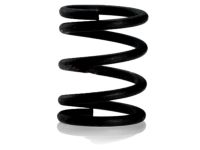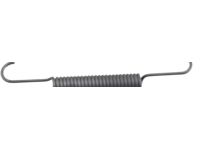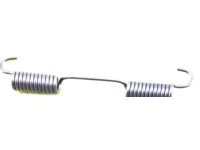Whenever the brake shoes are replaced, the return and hold-down springs should also be replaced due to the continuous heating and cooling cycle that causes them to lose tension over time, potentially leading to faster wear of the shoes. Begin by loosening the wheel lug nuts, raising the rear of the vehicle, and securely supporting it on jackstands while blocking the front wheels to prevent rolling. Remove the wheels and release the parking brake to take off the brake drums. If the shoes are worn into the drum, use a small screwdriver to lift the adjuster lever and back off the brake shoes for drum removal. If the drum is rusted to the hub, install two bolts into the threaded holes and tighten them to push the drum off. Replace all four rear brake shoes simultaneously, working on one brake assembly at a time to avoid mixing parts. Clean the brake assembly with brake system cleaner and allow it to dry, ensuring to catch any residue. Remove the hub and wheel bearing assembly, then take off the hold-down retainers and springs from the brake shoes using a brake spring tool. Disengage the front shoe from the wheel cylinder and anchor plate, then remove the lower return spring. Pull the rear shoe toward the rear of the vehicle to disengage it from the wheel cylinder, and remove the adjuster assembly, noting its orientation. Unhook the upper return spring from both shoes and detach the parking brake cable from the lever on the rear shoe before removing it. Check for leakage by peeling back the dust boots on the wheel cylinder and replace it if necessary. Clean the brake backing plate and lubricate the shoe contact points with high-temperature brake grease. Remove the retaining clip from the parking brake lever pivot pin, transfer the lever to the new shoe, and secure it with a new retaining ring. Connect the parking brake cable to the lever, then position the rear shoe on the backing plate, inserting the hold-down pin and installing the hold-down spring and retainer. Clean and lubricate the adjuster screw assembly, install it into the rear shoe, and secure the front shoe with the hold-down spring. Install the return springs and check the drum for cracks or damage before reinstalling it. Adjust the shoes so they just slip over the drum, then ensure they drag slightly before backing off the adjuster screw. Mount the wheel, install the lug nuts, lower the vehicle, and tighten the lug nuts to the specified torque. Finally, make several forward and reverse stops and operate the parking brake to adjust the brakes for satisfactory pedal action, checking the operation of the brakes carefully before driving.
Posted by NissanPartsDeal Specialist 

